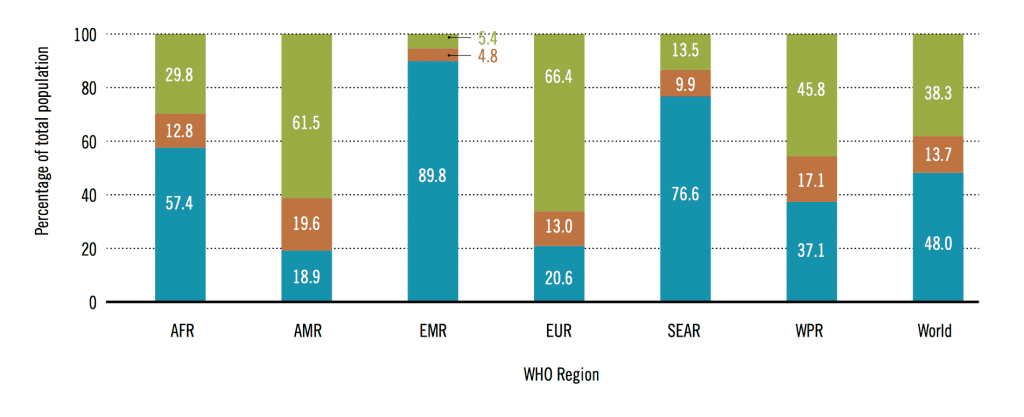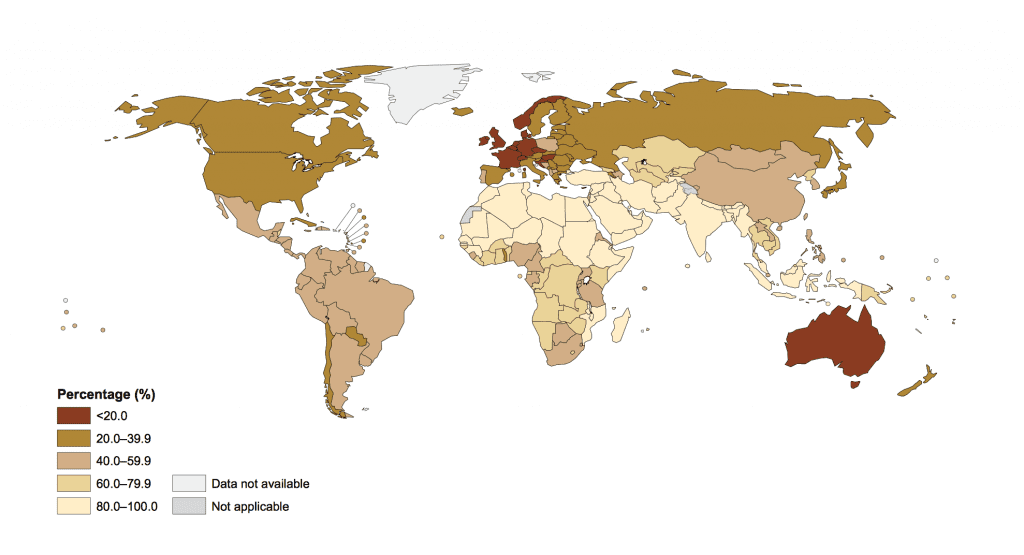The highest consumption levels continue to be found in the developed world, in particular in the WHO European Region (EUR) and the WHO Region of the Americas (AMR).
In the region of the Americas, alcohol is the leading risk factor for burden of disease among 26 different risk factors.
Alcohol consumption in the Americas is higher on average than the rest of the world. In particular, rates of heavy episodic alcohol use have risen in the past five years, from 4.6% to 13.0% among women and 17.9% to 29.4% among men.
Death and disability
Alcohol use led to ca. one death every 100 seconds, on average, in the Americas in 2012.
Alcohol use contributed to more than 300,000 deaths in the Region—with more than 80,000 of those involving deaths that would not have occurred had alcohol not been consumed.
Alcohol use is related to more than 274 million years of healthy life lost (DALYs) in the Americas in 2012.
In the Americas in 2012, the top three causes of death and disability caused by alcohol overall were AUDs, liver cirrhosis, and interpersonal violence.
Harm to others
In Argentina, 68% of all cases of domestic violence are alcohol-related.
In Brazil, 60% of all cases of intimate partner violence are related to alcohol.
In rural Mexico, a $20 dollar long-lasting increase in the wife’s income is associated with a 15% decrease of the husband’s alcohol use and a 21% decrease of aggressive behaviour.
In the United States, more than 10% of children live with a parent with alcohol problems, according to a 2012 study.
Obstacle to development
About 5.7% of the Region’s population reported suffering from an alcohol use disorder. The real number is likely higher.
Alcohol is the leading risk factor for death and disability among people aged 15 to 49 years in the Americas. This is the age range in which people are typically at their most productive economically. Alcohol misuse likely results in billions of dollars of lost wages every year.
Indigenous peoples account for some 13% of the Region’s population. While major gaps exist in understanding to what extent and in what ways alcohol affects these diverse and vulnerable groups, some case studies and anecdotal reports indicate that indigenous peoples are burdened substantially by alcohol-related harms but have limited access to care and other interventions.
Most students surveyed in the Americas had had their first alcoholic beverage before the age of 14. Around 14,000 deaths of children and youth under 19 were attributed to alcohol in 2010.
The source for all facts, if not otherwise indicated is the 2015 Regional Status Report on Alcohol in the Americas, by PAHO and WHO Americas.


